If I counted the times I’ve used my Elinchrom Ranger RX packs on shoots, I’d need a calculator. I’ve hauled these packs around the globe, through the forest, over glaciers—they never fail. But flash and battery technology have evolved, and carrying a 17 lb. strobe pack into the backcountry took some effort. Rumors had started to fly about a new Ranger, and it has arrived. Enter the ELB1200.
The ELB1200 is more than just an upgrade. The list of new features is long, but one quick look at the specs and I started fixating on the ELB 1200. Why? The pack weighs in around 9 lbs., almost 50% lighter than the Ranger RX, but can still fire 215 full-power flashes. The pack is much smaller too, allowing easy transport to remote locations. Taking some upgrades from the ELB 400, the ELB 1200 has a large OLED control display, making it very intuitive if you’re using an ELB 400. The pack has a range of 8.5 f-stops adjustable in 1/10 increments.

When I started to use the ELB 1200, I saw just how much R&D Elinchrom had put into this new pack. The pack comes with the Battery Air, but you can also attach the Battery HD giving you 400 full-power flashes, more than enough for many location shoots. The pack can recycle in 1.7 seconds at full power, much faster that the RX. You can choose between three different heads—the Pro, Action, or HS (Hi-Sync)—depending on your shooting needs. A huge improvement is the ability to choose the power distribution between the two ports: 2:1 asymmetrical or 1:1 symmetrical. Video shooters will rejoice with more than 80 minutes of continuous dimmable LED light with the Battery Air, or 120 minutes with the Battery HD. A switch on the pack turns the cooling fan off for silent operation during video use. And the battery even has a USB outlet to power up your mobile devices.
I was completely impressed by the new improvements, but could this pack deliver like the RX? I decided to do three different shoots and find out.
Urban Portrait
To start things off, I met a model in the quaint Old Town area of Fort Collins, Colorado. I was working without an assistant on this shoot, and I confirmed the first big advantage of the ELB 1200. I was able to load up my small Lowepro Pro Roller X100 AW with the ELB 1200, one Hi-Sync Head, and the EL-Skyport Plus HS transmitter. In other words, I was cruising down the street with a 1200-watt studio in my roller.
For my first shot, I set up a 53″ Rotalux Octabox with the Hi-Sync Head. As I mentioned earlier, Elinchrom offers three heads: The Hi-Sync Head allows you to shoot up to 1/8000 for dreamy wide-open portraits and fast action; the Pro Head is for general purpose photography; and the Action Head has fast flash durations to freeze movement. I was shooting on a bright day, so I knew if I shot wide open I’d go past my 1/250-sync speed, and would need Hi-Sync capability.

Using Elinchrom’s Hi-Sync technology, the flash fires just before the shutter is triggered to optimize the timing for the brightest part of the flash burst. With earlier systems (Hypersync), banding could occur unless you had the system perfectly calibrated. But using the Hi-Sync Head for the ELB 1200 combined with the EL-Skyport Plus HS, Elinchrom has perfected the timing and eliminated banding issues. This was confirmed during my test shoots.
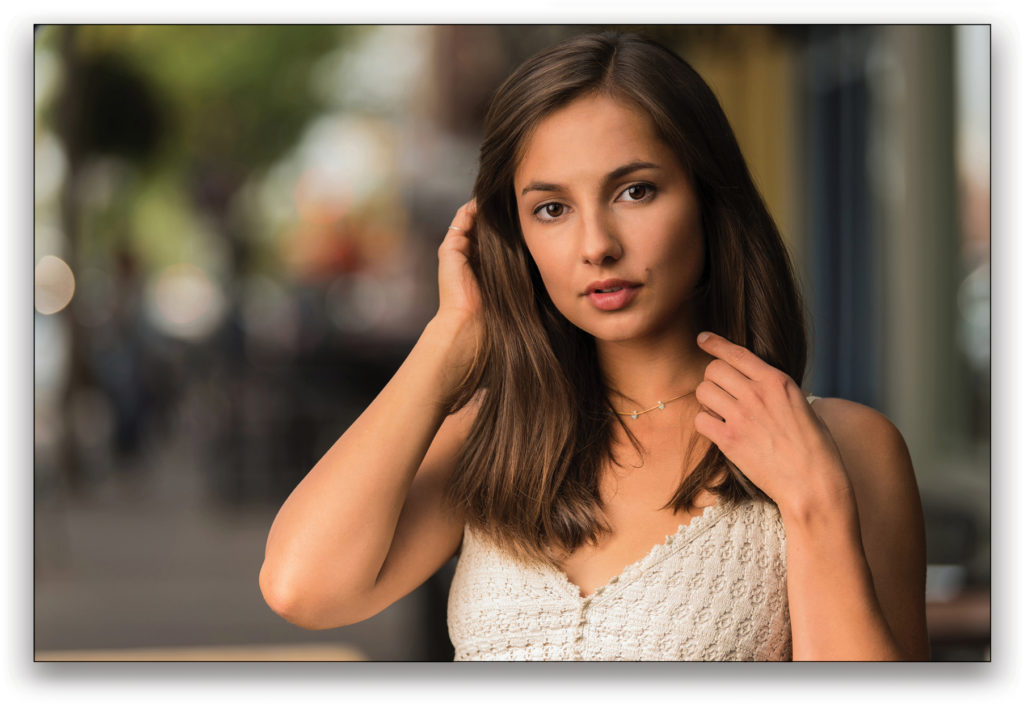
Another huge bonus of the ELB 1200 is seamless functionality using the EL-Skyport Plus HS. The Skyport will display the ELB 1200 (and other Elinchrom packs as well), which makes it very easy to adjust power by spinning a dial. I really like the high visibility of the illuminated display to check strobe settings, and using large buttons solves the challenge of wearing gloves during winter shoots.
This pack recycles fast—really fast! I was blazing away at about half power, and the recycle seemed almost instantaneous. The Skyport receiver is built-in on the ELB 1200, and shooting in bright sun was flawless; I didn’t miss one flash. I was shooting with my Nikon D810 and 70–200mm F2.8 lens. As I went to wider apertures, my shutter speed went to 1/500 and the flash kept fully illuminating the model.
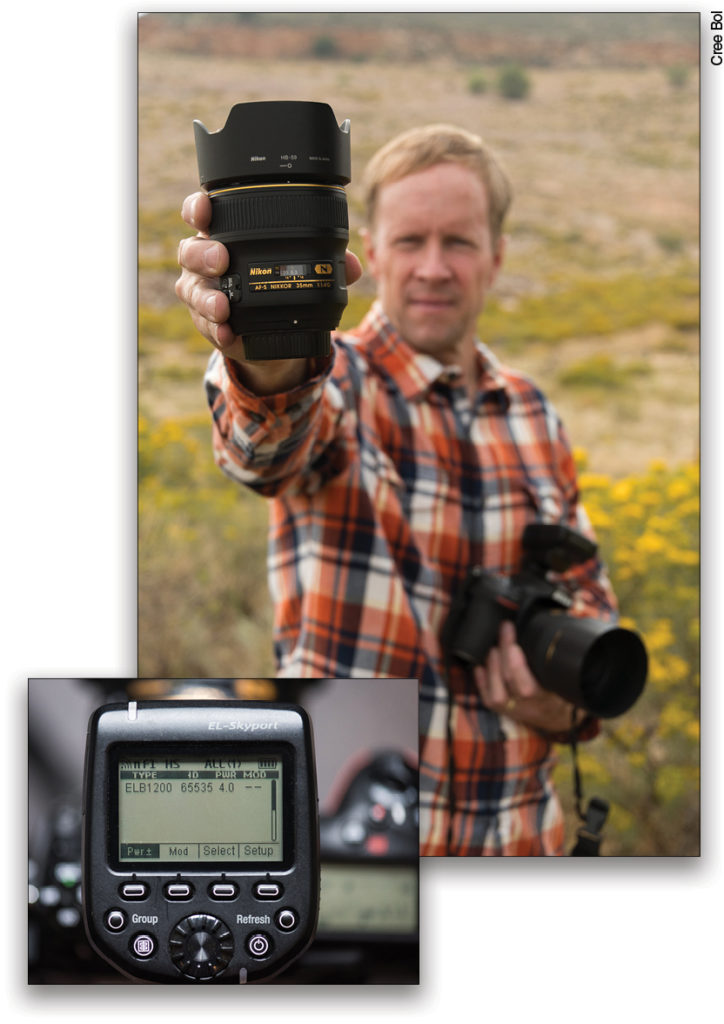
To further test the Hi-Sync ability of this system, I put on my 35mm f/1.4 and moved to a new location. The background was in full sun, so shooting at f/2 at ISO 32 put my shutter speed at 1/3200. The flash wasn’t affected by the fast shutter speed, and nicely illuminated my model. Gone are the days of worrying about flash sync speed with the new Hi-Sync head and ELB 1200. Attach the EL-Skyport Plus HS and you’re good to go.

Going Country
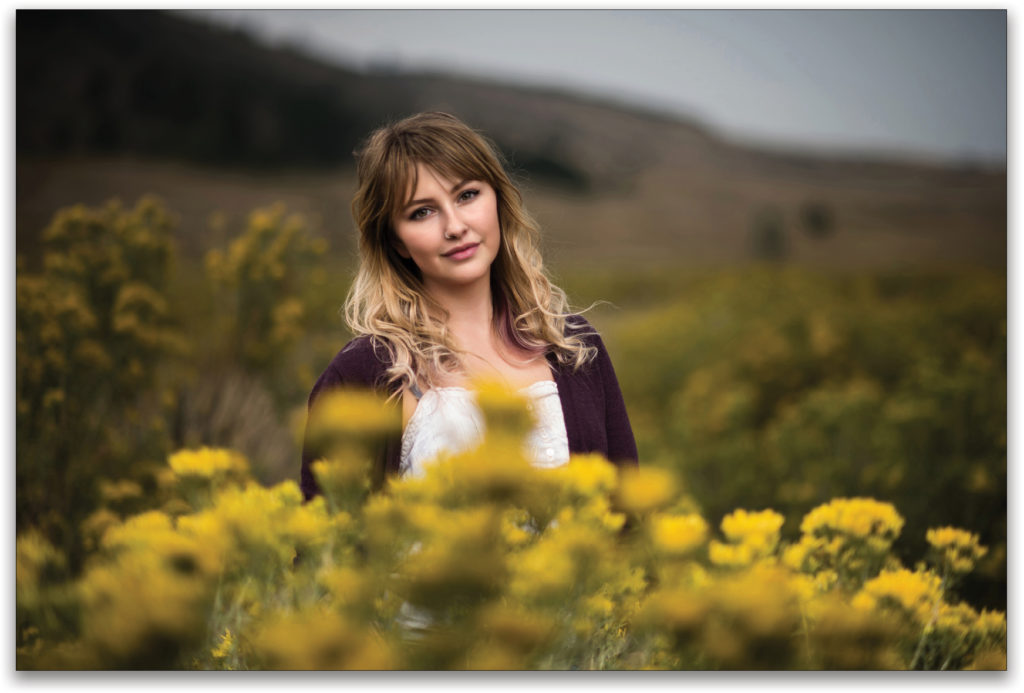
One of my favorite light modifiers, and one that has shaped some photographers’ careers, is the Indirect Litemotiv Octa 190. This unique Octabank attaches the flash head aimed back into the softbox, which creates some of the softest light you can imagine. A defining test of the new ELB 1200 and Hi-Sync Head would be how it performed using the huge Litemotiv for f/1.4 portraits in midday light.

To test out the mighty 6′ Octabank, I worked with another model in the foothills with beautiful fields of yellow flowers. I started with my 35mm shooting at f/1.4 to create silky bokeh of the flower fields. My D810 was set at ISO 32, f/2 at 1/5000. And as I’d hoped, the ELB 1200 produced beautiful soft light at this fast shutter speed. The ELB 1200 was set around 75% power, and the Octabank was about 6’ away from my model. If I’d had a smaller softbox attached, I have no doubt that I could have put my model much further away and still had plenty of power at 1/5000 using Hi-Sync. Very impressive.
Despite one close encounter with a rattlesnake, this shoot really convinced me that the ELB 1200 was the right pack for much of my location shooting. When you’re shooting through a large 6’+ softbox in sunny conditions, 1200 watts is often necessary.
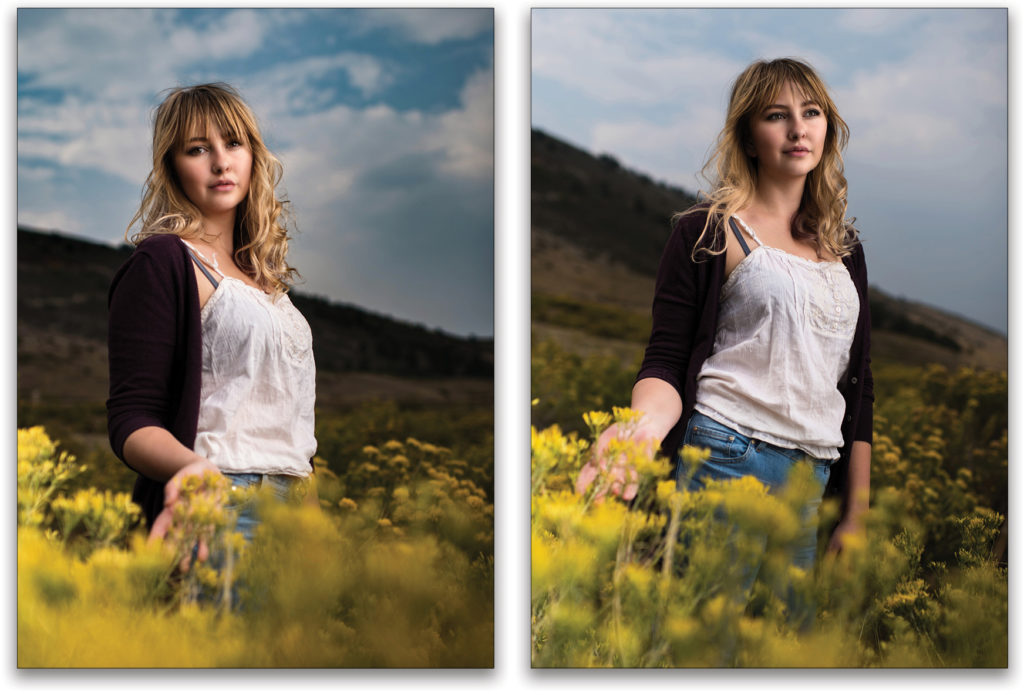
Down the Trail
So far I’d been using the Hi-Sync head and shooting wide open for some beautiful portraits. But since the ELB 1200 was so light and portable, I wanted to do something in the backcountry. I decided to recruit a rock climber and photograph him on a small cliff near where I live.
I loaded up my photo backpack with everything I’d need for this shoot: ELB 1200, Action Head, and a standard reflector along with some grids. I wanted strong, edgy light for this rock-climbing shot, so I left my softboxes at home. Storm clouds were building in the distance, so I knew conditions would be perfect for dramatic skies and edgy light on my climber.
We hiked down the trail and set up below the cliff. The climber was comfortable climbing on the face about 15′ off the ground, so we decided to light the rock face right at this height. I put a 40° grid on the Action head, and placed it on an 11′ light stand aimed at where the climber would be. As expected, the shoot went smoothly. I was able to quickly change positions and adjust power using the EL-Skyport Plus HS. To add a little punch to the climbing images, I ran them through On1 Effects 10 using the Magic City action (in the Landscape presets).
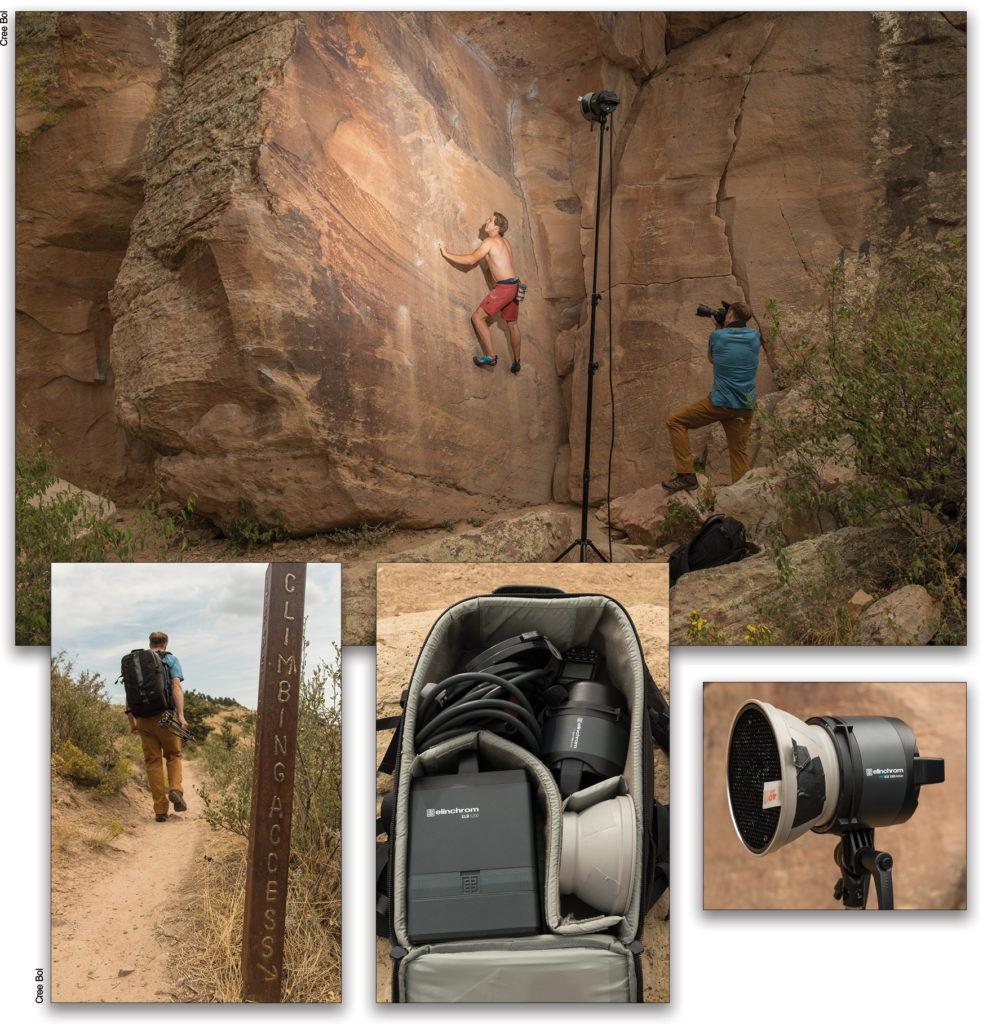
Final Thoughts
I’ve been an Elinchrom user for many years, so I knew the ELB 1200 would be a logical choice for me. But as I used the pack on different photo shoots, I realized it filled a gap in the strobe flash market. Most recently introduced battery strobe systems have about half the power of the ELB 1200. Simply put, the ELB 1200 has the most power and lightest weight I’ve seen in a portable battery strobe.
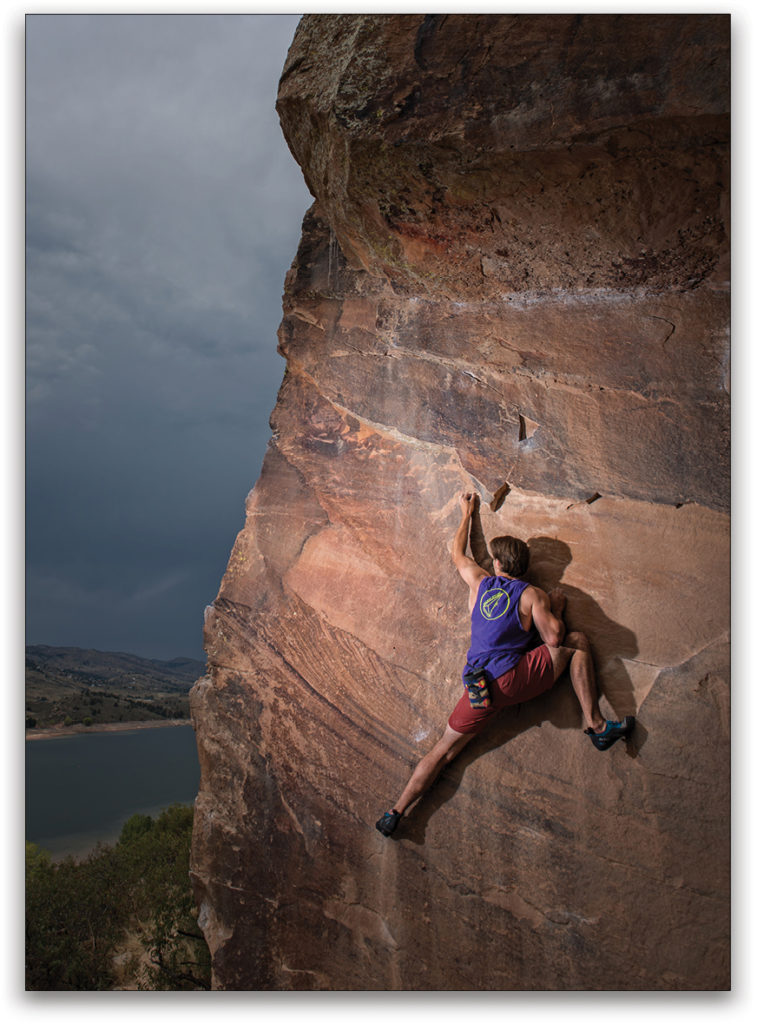
While the ELB 400 is the right choice for many situations, if you’re shooting a large softbox in bright light, the ELB 1200 is a must. Or, if you’re trying to add Hi-Sync flash at 1/4000 to a distant skier going off a jump, you’ll have more than enough power using one ELB 1200. Combine this power with some advanced digital features, extended video LED lighting, and an intuitive transmitter, and you’ll have a flash system that’s going to tempt any location photographer.
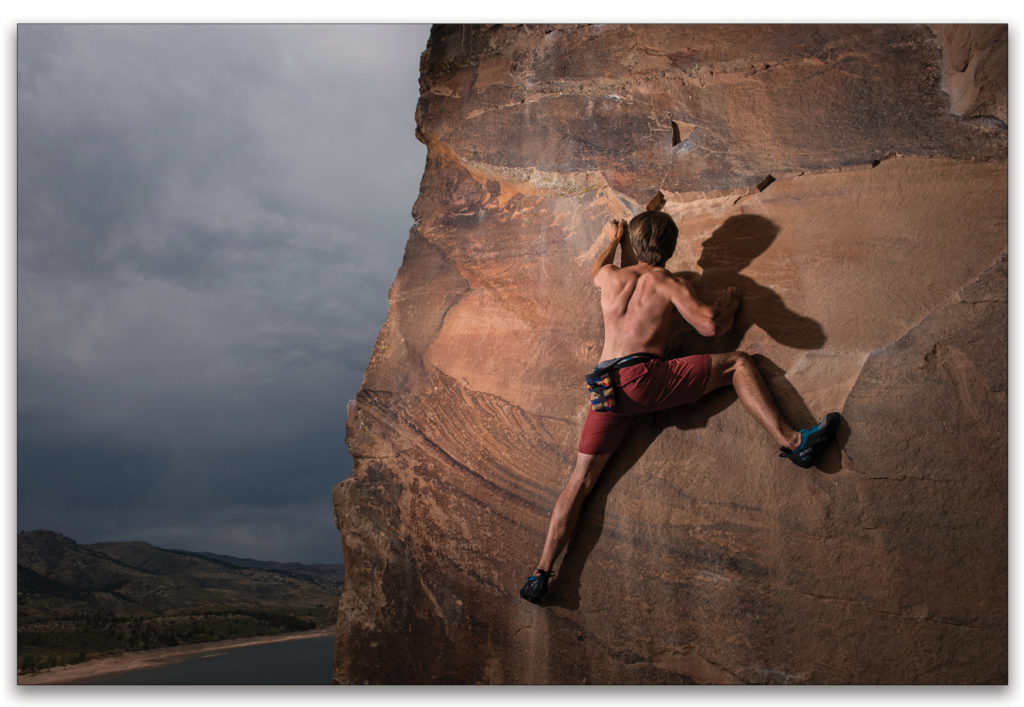
This article originally published in Issue 34 of Lightroom Magazine.

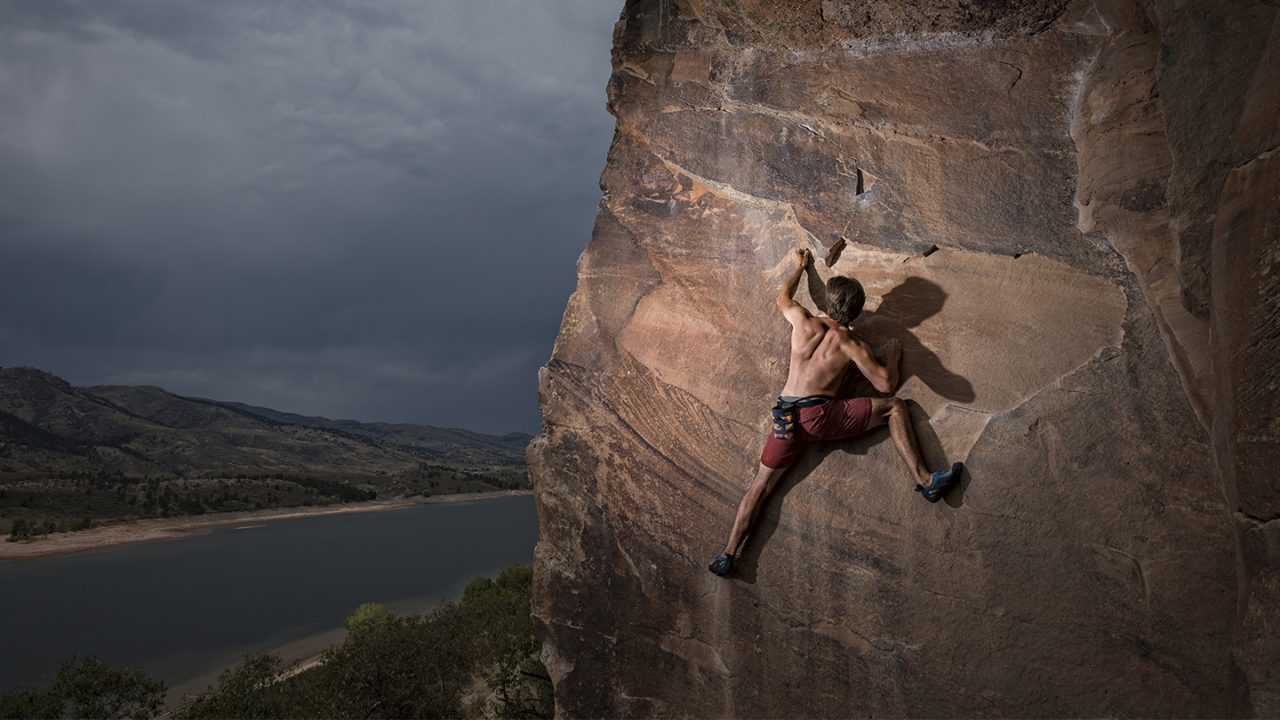





WOW, Amazing photos with an excellent article. Thank you so much for sharing your blog.
The great presentation you have included here, its really amazing, I have seen more time, it’s really impressed me. thanks a lot